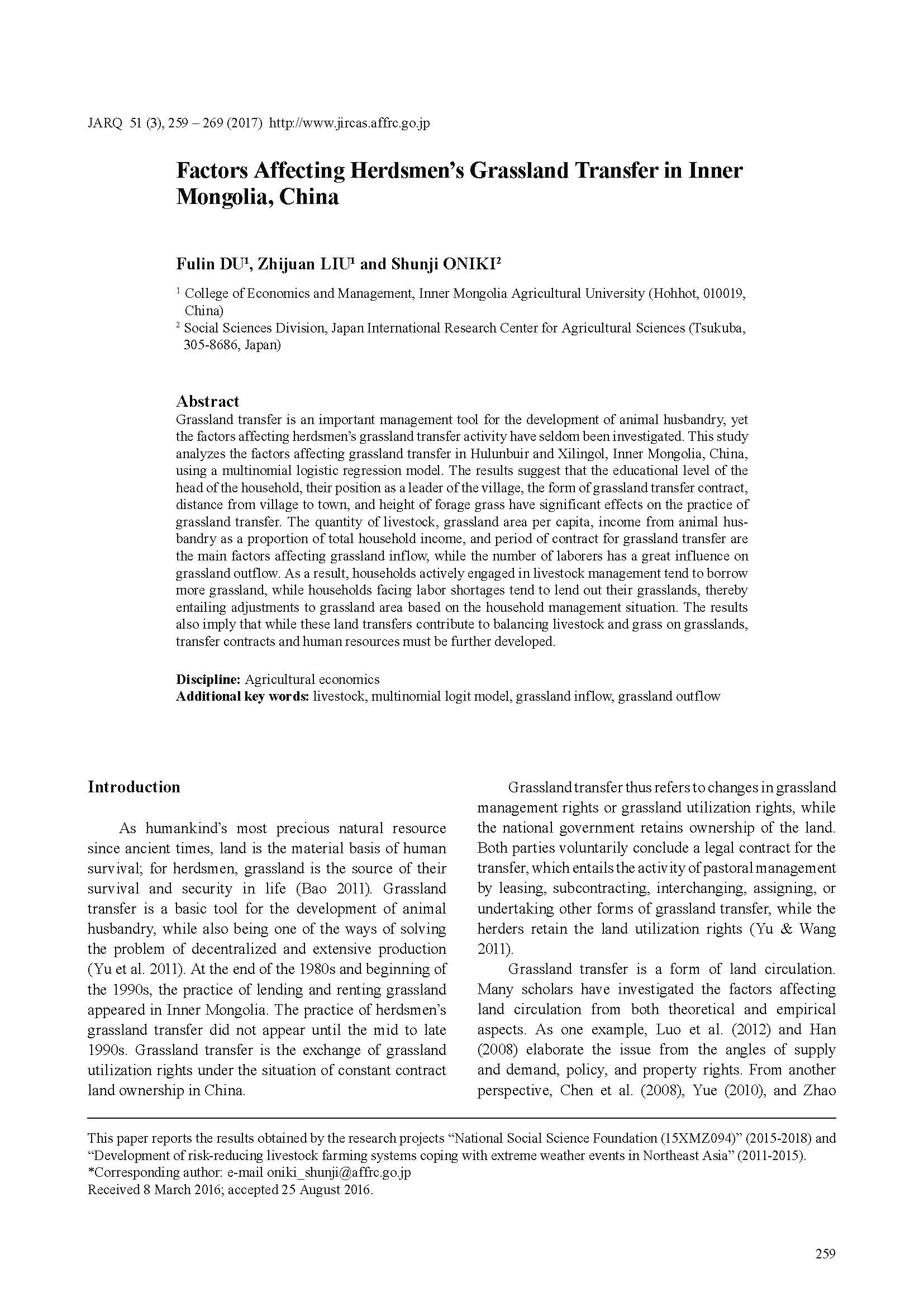Factors Affecting Herdsmen’s Grassland Transfer in Inner Mongolia, China
| ISSN | 00213551 |
|---|---|
| NII recode ID (NCID) | AA0068709X |

Grassland transfer is an important management tool for the development of animal husbandry, yet the factors affecting herdsmen’s grassland transfer activity have seldom been investigated. This study analyzes the factors affecting grassland transfer in Hulunbuir and Xilingol, Inner Mongolia, China, using a multinomial logistic regression model. The results suggest that the educational level of the head of the household, their position as a leader of the village, the form of grassland transfer contract, distance from village to town, and height of forage grass have significant effects on the practice of grassland transfer. The quantity of livestock, grassland area per capita, income from animal husbandry as a proportion of total household income, and period of contract for grassland transfer are the main factors affecting grassland inflow, while the number of laborers has a great influence on grassland outflow. As a result, households actively engaged in livestock management tend to borrow more grassland, while households facing labor shortages tend to lend out their grasslands, thereby entailing adjustments to grassland area based on the household management situation. The results also imply that while these land transfers contribute to balancing livestock and grass on grasslands, transfer contracts and human resources must be further developed.
| Date of issued | |
|---|---|
| Creator | Fulin DU Zhijuan LIU Shunji ONIKI |
| Subject |
livestock multinomial logit model grassland inflow grassland outflow |
| Publisher | Japan International Research Center for Agricultural Sciences |
| Available Online | |
| NII resource type vocabulary | Journal Article |
| Volume | 51 |
| Issue | 3 |
| spage | 259 |
| epage | 269 |
| DOI | 10.6090/jarq.51.259 |
| Rights | Japan International Research Center for Agricultural Sciences |
| Relation | : J-STAGE |
| Language | eng |
